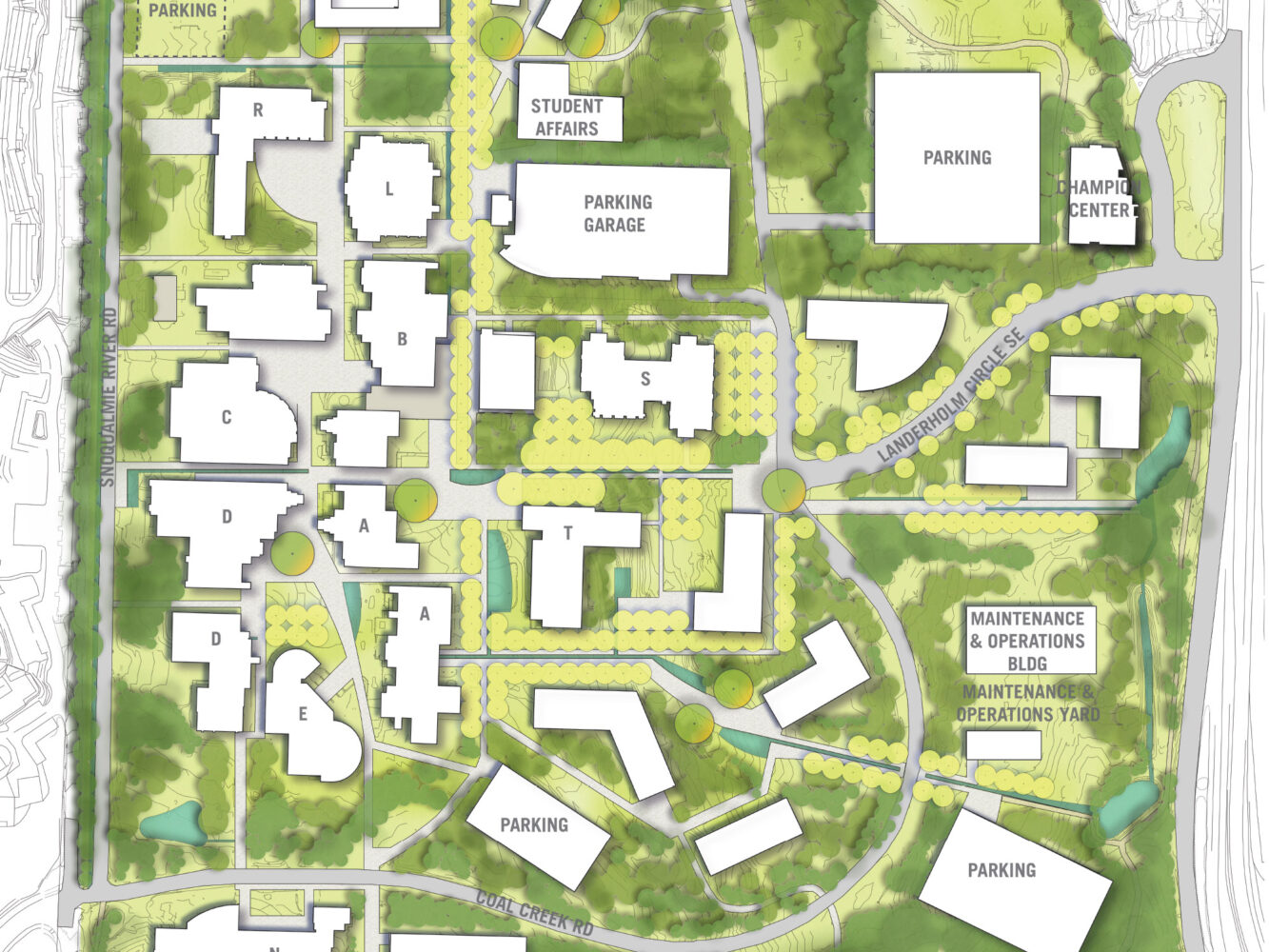
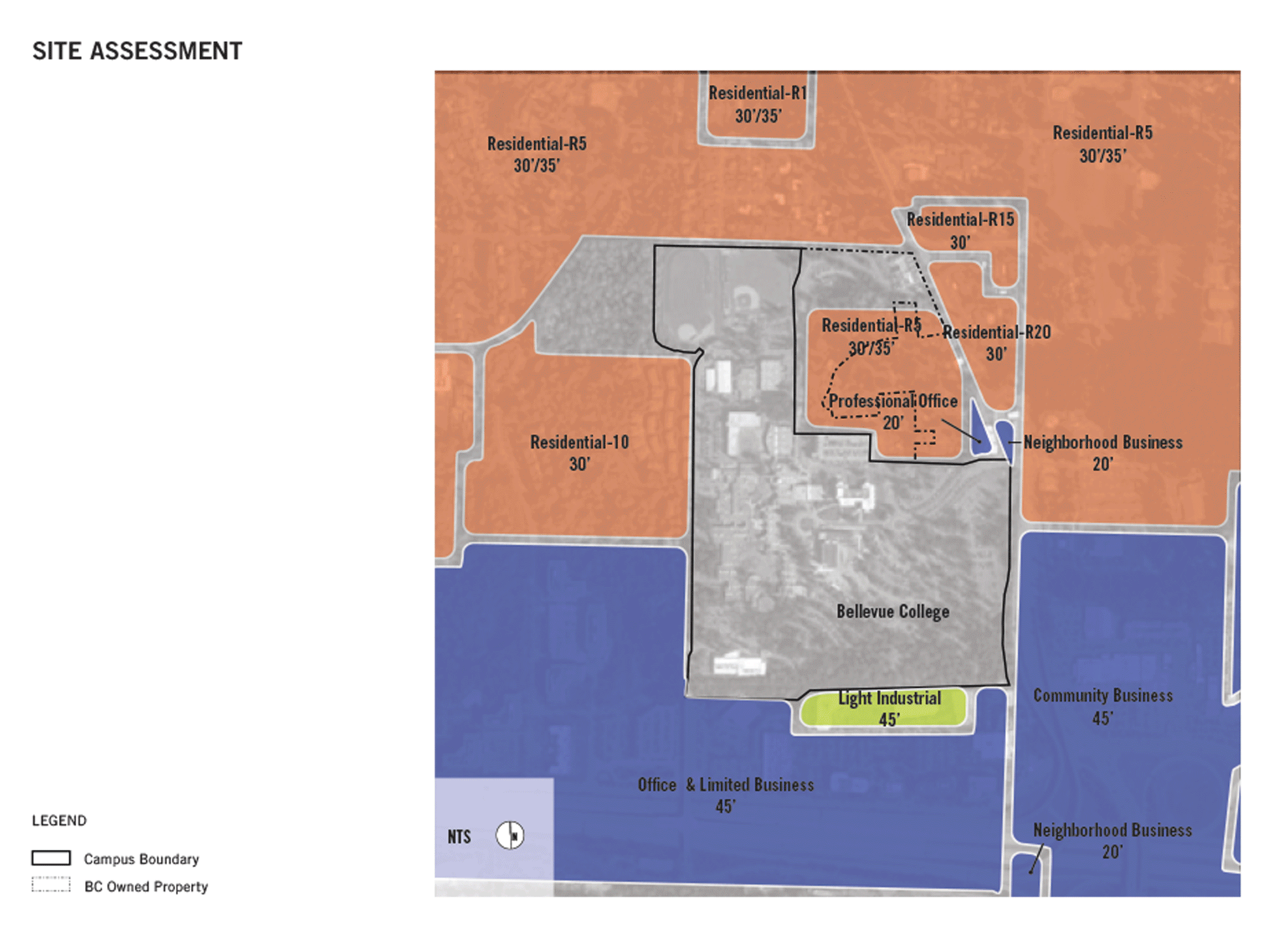
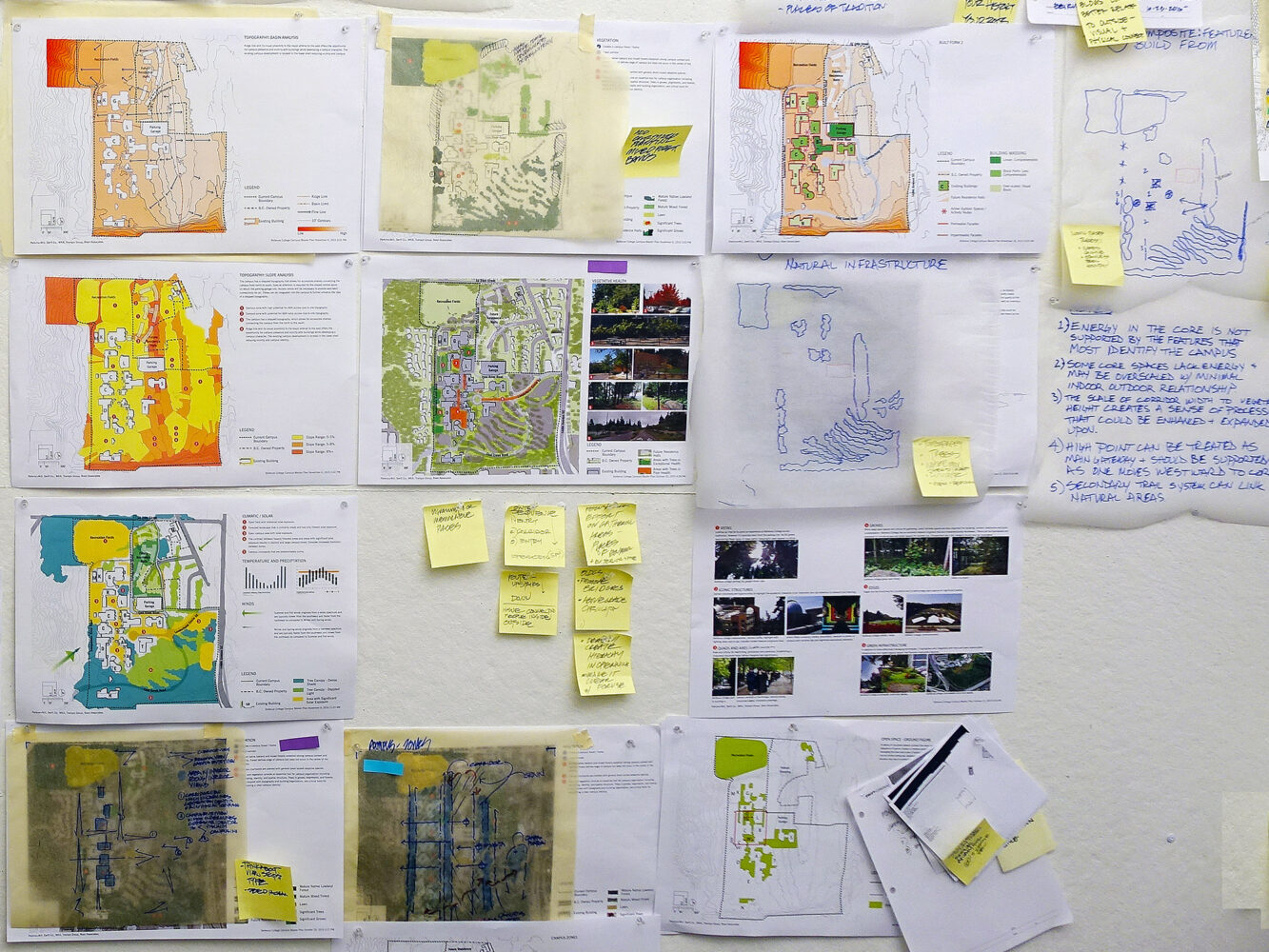
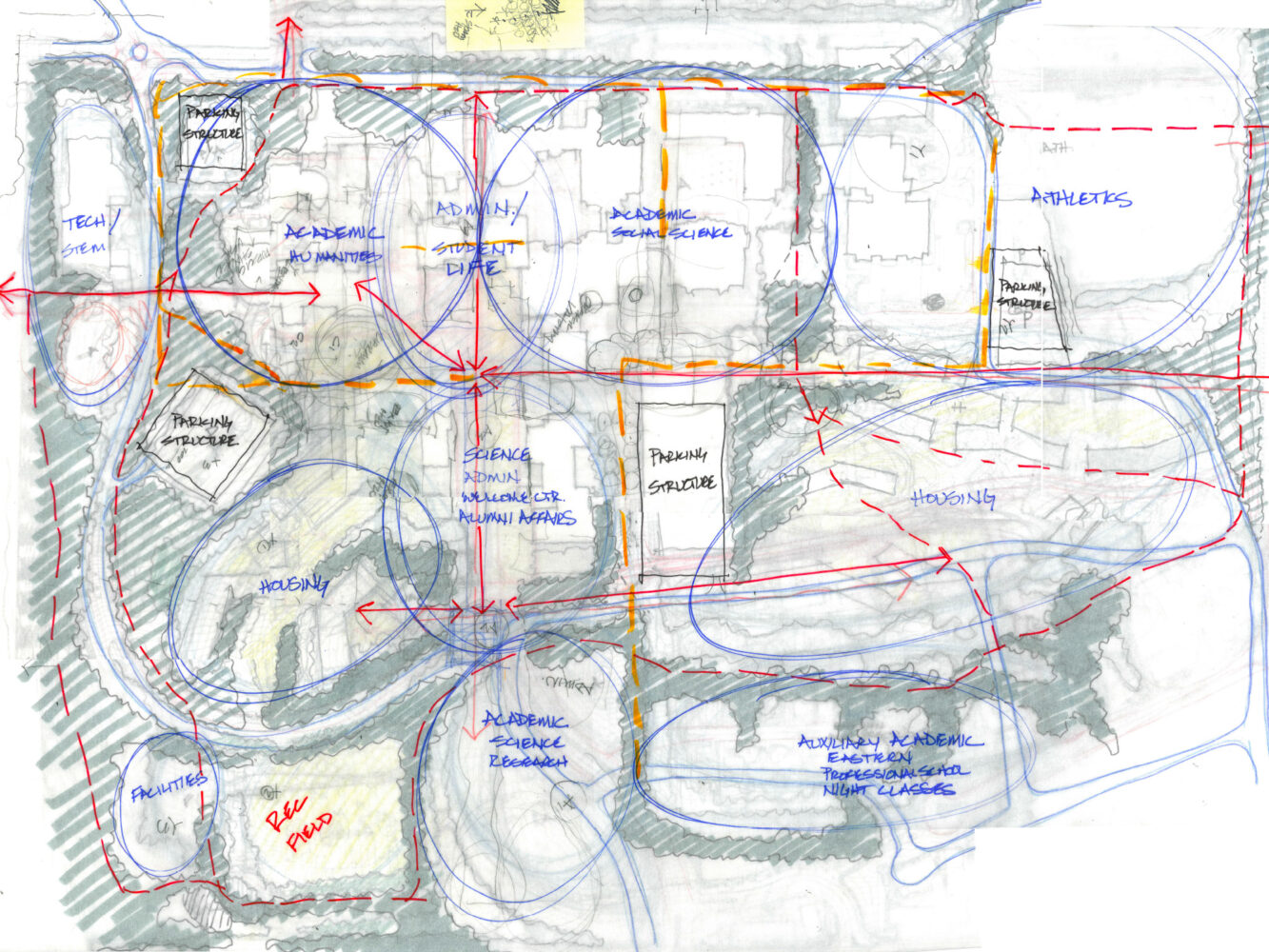
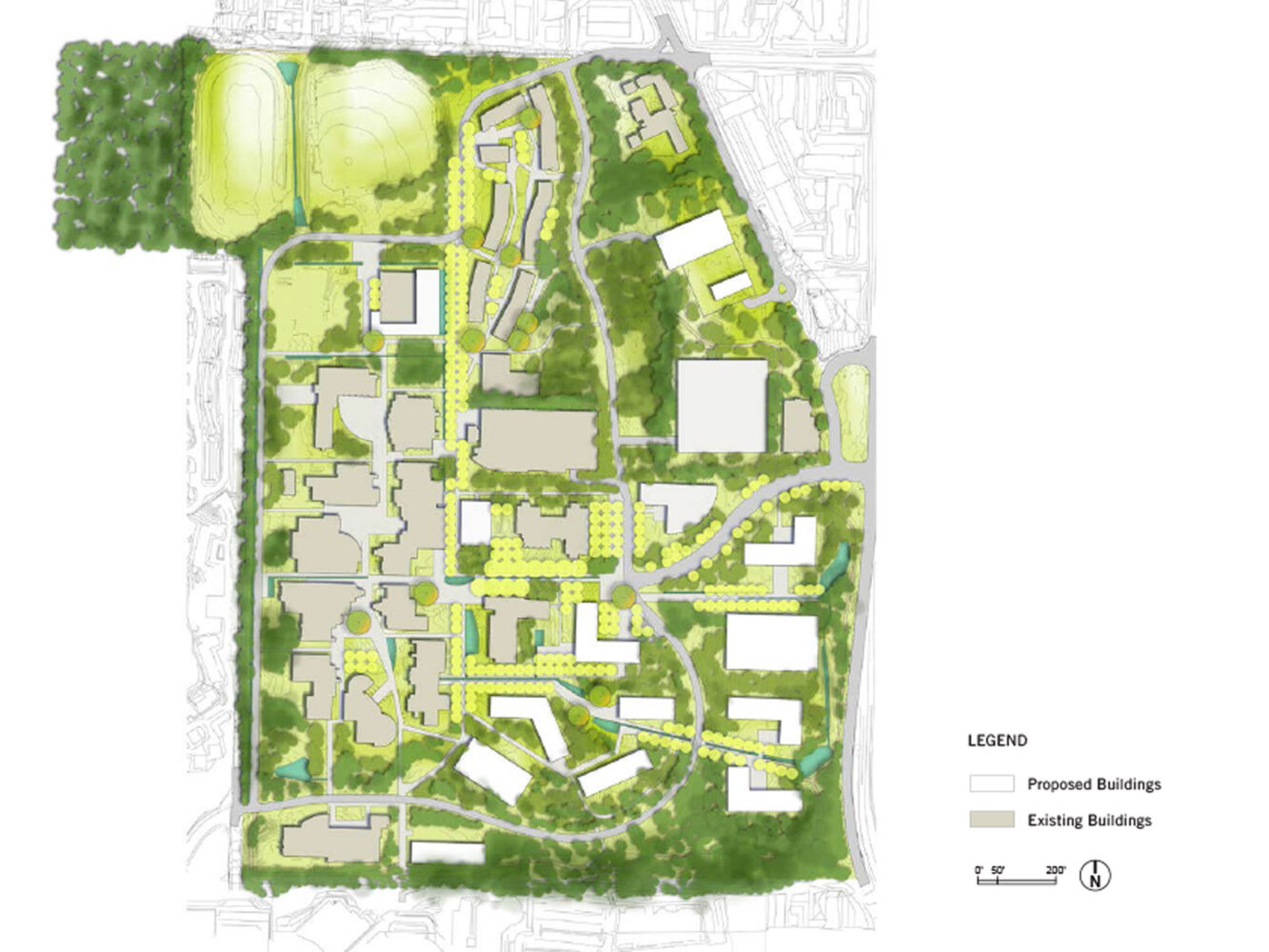
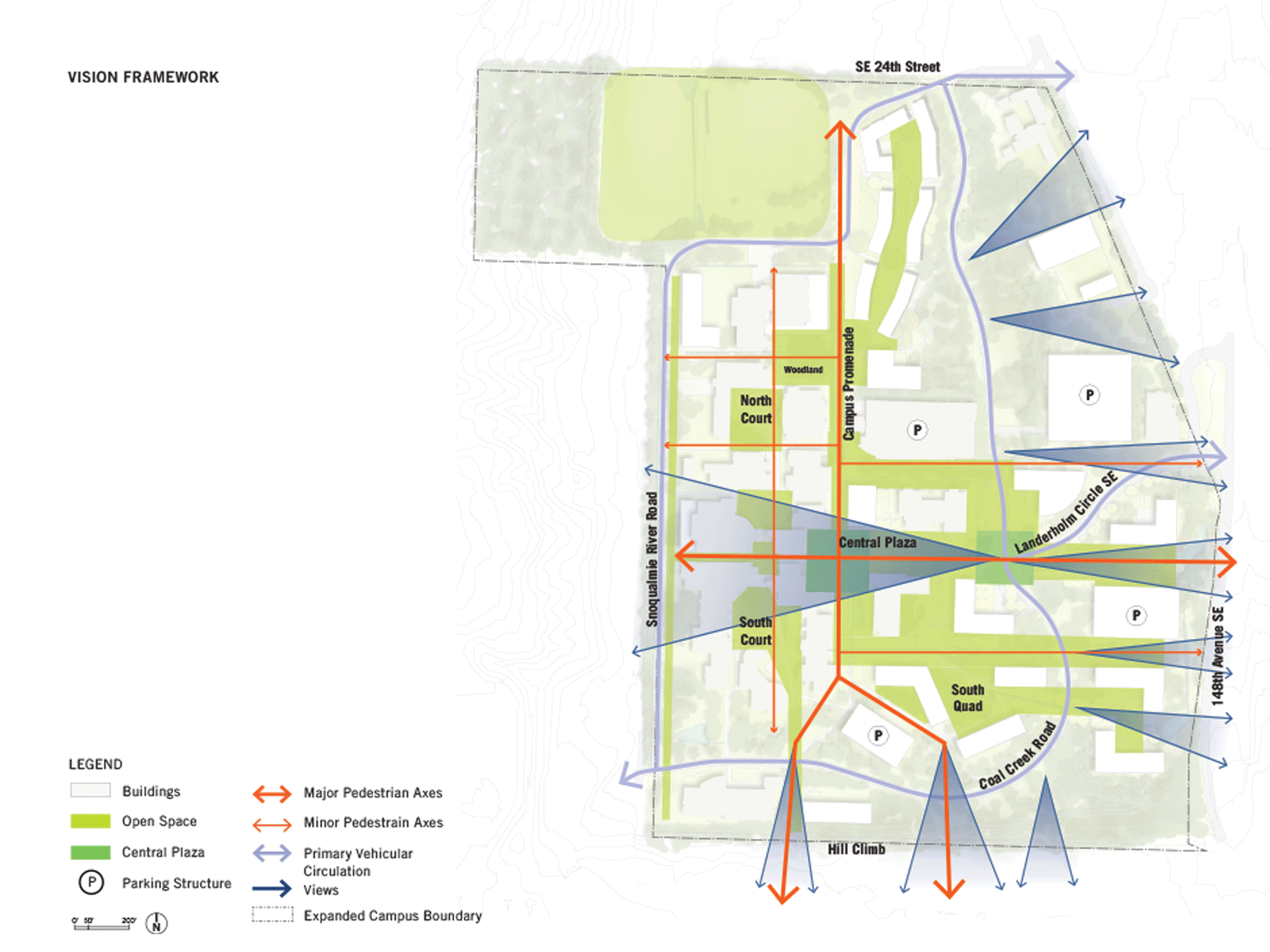
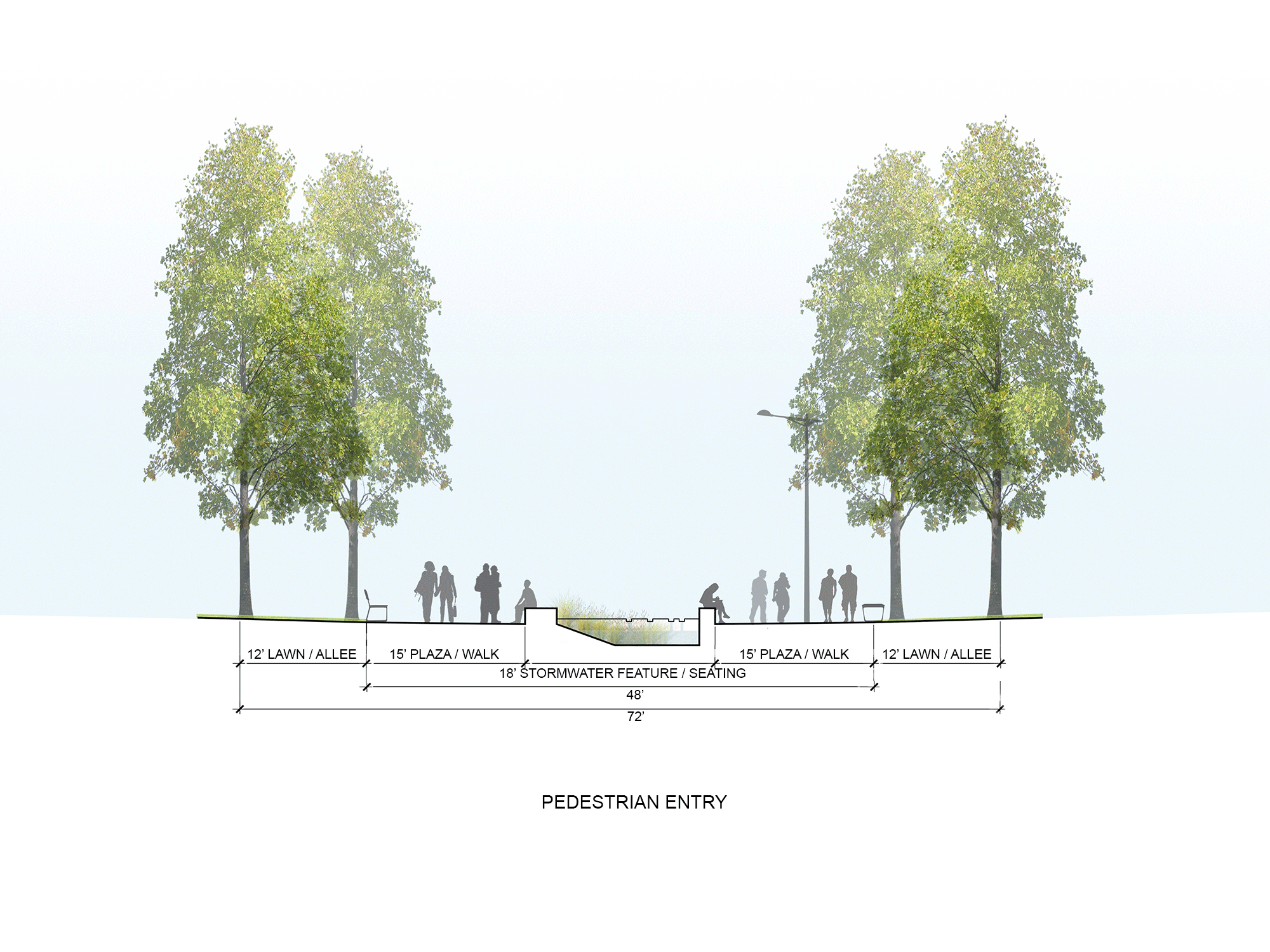







client: bellevue college
size: 100 acres
location: bellevue, wa
duration: 2015-2016
Bellevue College sits on a ridgeline overlooking the cities of Bellevue and Seattle, with the majestic Olympic Mountains beyond. The college was established in 1966 as a two-year community college and is transitioning to include four-year programs. With this change and the introduction of residential halls, the college is at a pivot point, and the development of a forward-thinking master plan that accounts for the phased development of a cohesive campus community is essential for an optimized future.
More >The 100-acre campus is comprised of various periods of development, and while the college community is cohesive, the campus reflects eras of intensive development and incremental improvements that have resulted in a campus needing significant upgrades, and a cohesive vision for the future. This is a place in transition from a commuter campus to a four-year residential college. The development of a clear campus identity and understanding of context is critical as part of this transition The role of campus open spaces and landscape are essential tools in binding together the disparate periods of improvement. Land rich, the college has the opportunity to phase out expanses of parking to create sites for campus life and education, replacing them with a network of trails, plazas, quadrangles and public transportation access.
The master plan provides guidance for strengthening the campus identity and bolstering a changing, but vibrant academic community by building upon the strengths of the existing campus: its strong ties to a classic northwest forest setting; landmark views of the Olympic Mountains; environmental and social justice; and an engaged student body and staff.
The master plan knits the campus into a legible and cohesive environment – creating a physical campus that builds upon its assets of location, topography, facilities, and a clear mission and values. The plan stewards these critical assets by building a stronger framework to support community life, implementing sustainable strategies, and systematically addressing needs, facilities and campus open space typologies.
Less <